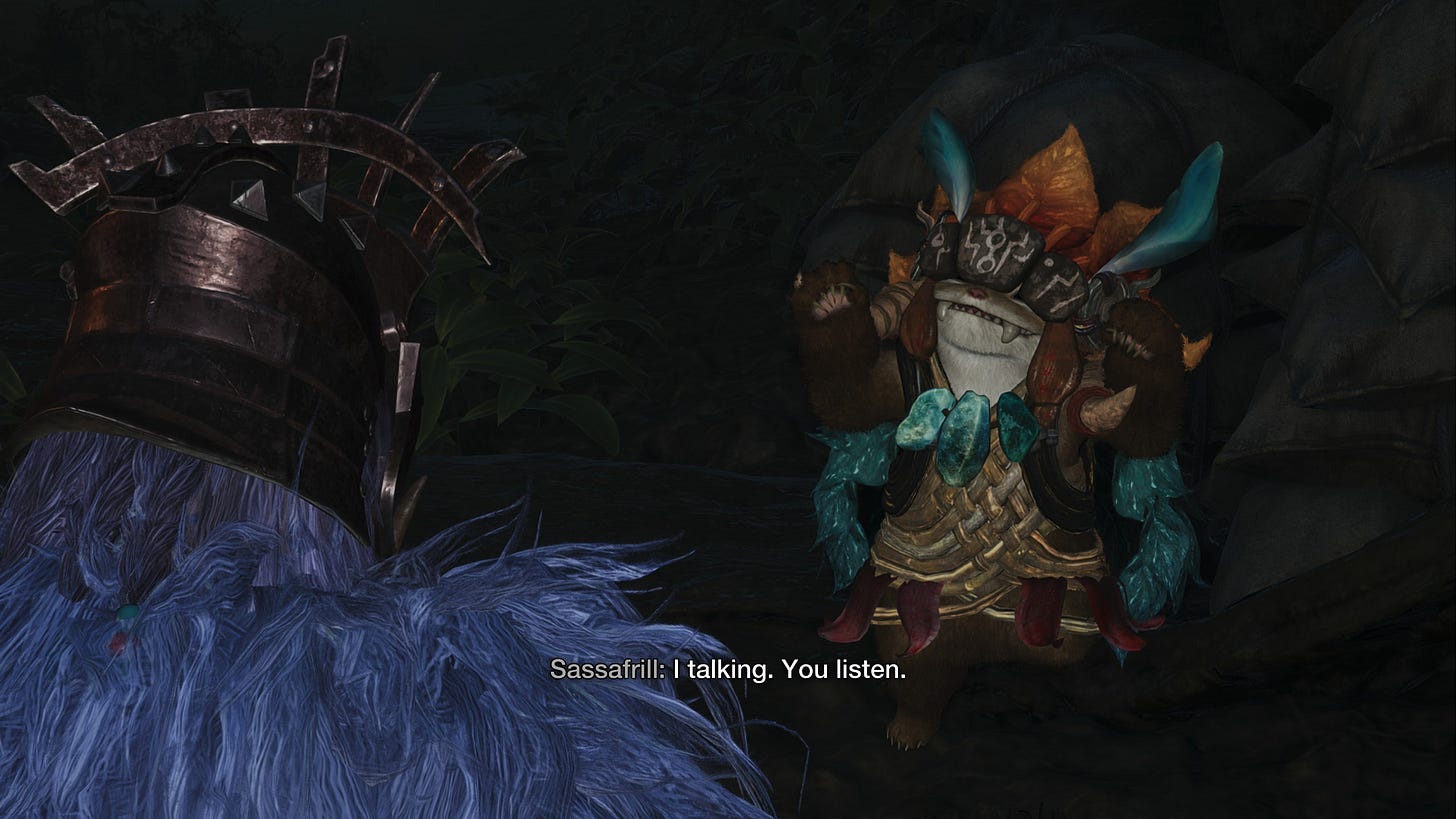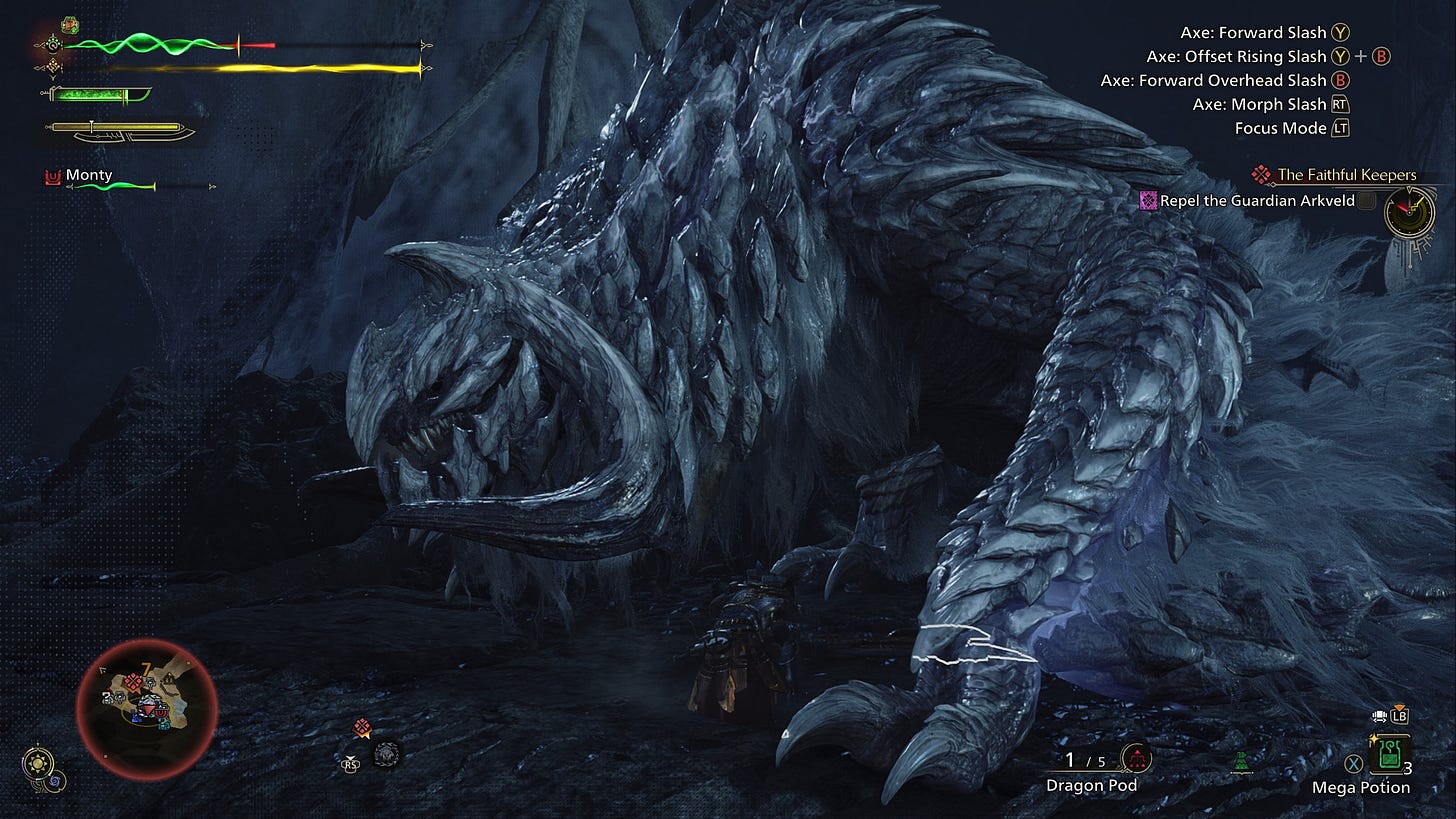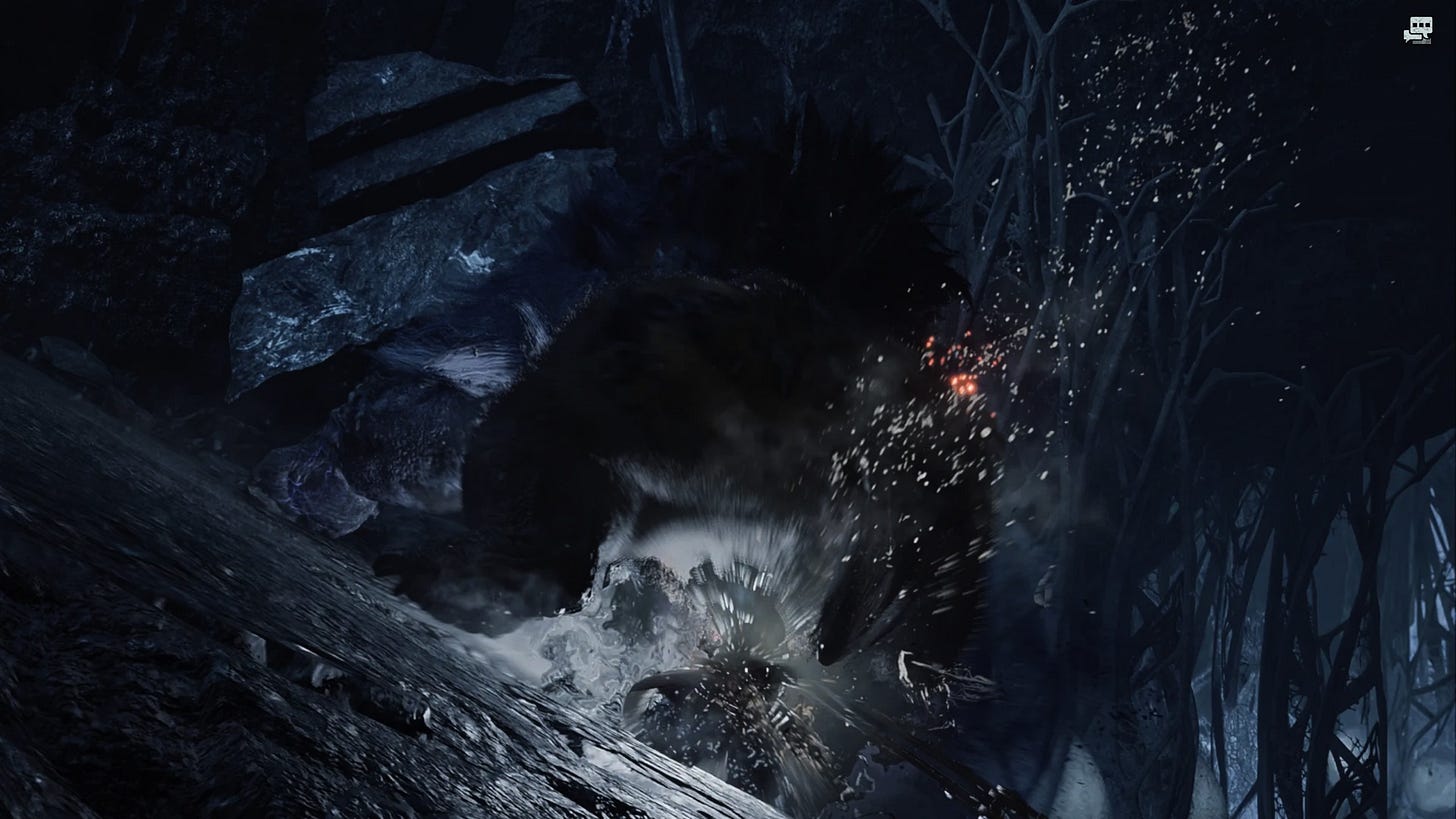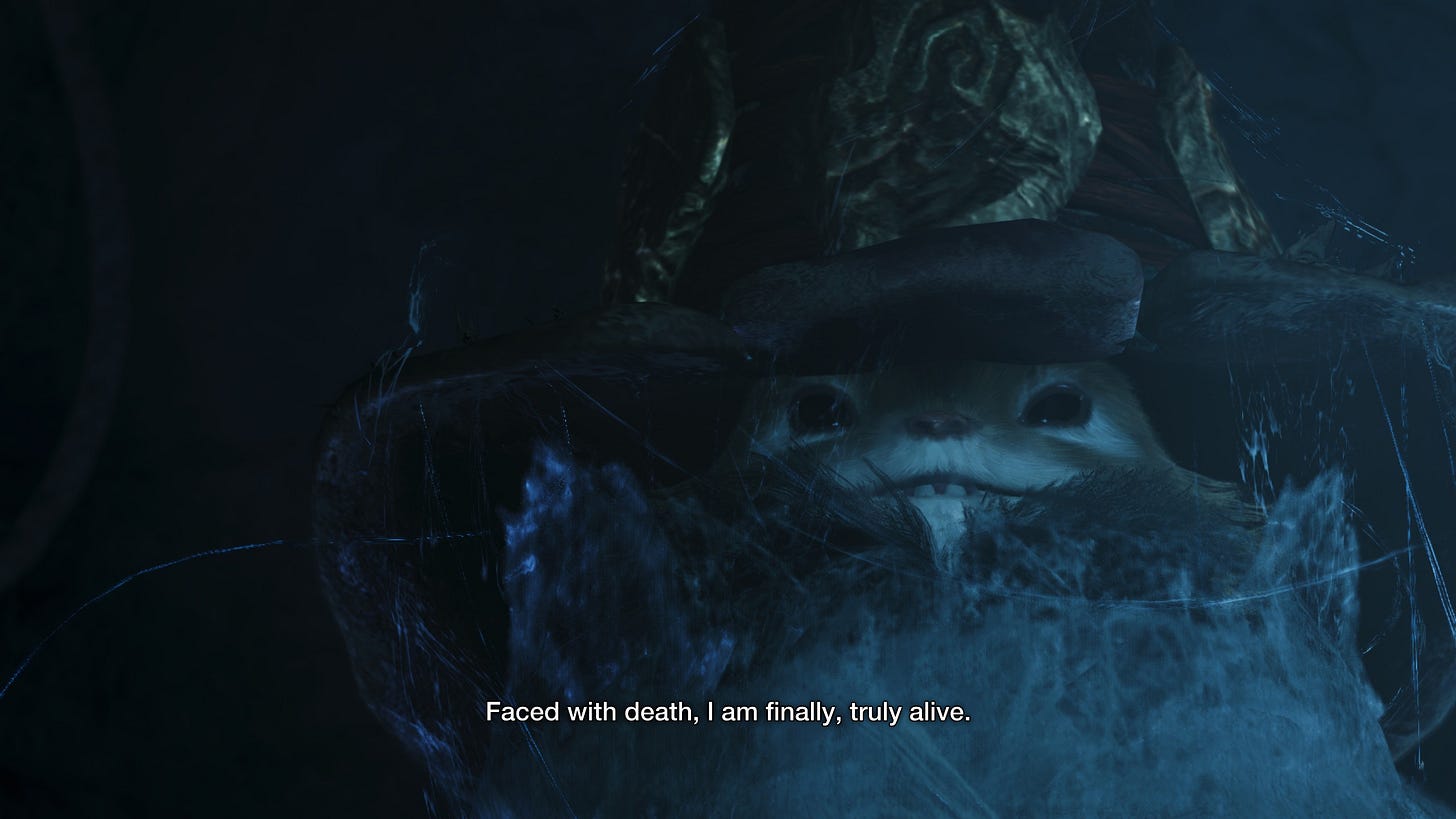This review comes with some spoilers for Monster Hunter Wilds, but you don’t care about that… do you?
One might see the latest entry in the Monster Hunter series as the next drip of coffee from the world’s longest running straining process. It represents a process of iteration and refinement; a storied design that has been tried and tested over decades of play. No, you got it right, my initial coffee analogy didn’t survive beyond the sentence that I introduced it.
This makes it extremely intimidating to review, but I can only imagine how terrifying it is for Capcom to develop for. When they make a change or addition to something like the longsword, it’s not “just” making a change to a weapon, it’s touching something that legacy players identify with, and has floated around for two decades. For this reason, while there are big changes that are introduced throughout the series, it’s rare for that core hunting loop to be significantly different.
What makes Monster Hunter Wilds interesting to me is that there are massive changes to that core formula: not just minor balance adjustments or extra features, but re-evaluations of what makes that core gameplay compelling. What makes it doubly interesting, is that I won’t be recommending Wilds in this review. This is not because I think those changes were unwarranted or bad — I actually think the opposite — but because I think Wilds is bloated with piles of AAA-ish cinematic grease that get in the way of that core experience.
It’s a dangerous situation for Capcom, because there’s a whole heap of ancillary issues that currently have the game squatting on a “mixed” Steam review score (for comparison, Monster Hunter Rise and World are both “very positive”). Players typically aren’t great at self-understanding why they don’t enjoy a game, and so they tend to lash out against every change that was made.
Let’s get into it, and start with one of the core reasons for that mixed score.
On a technical level, Wilds is a spectacular dud.
The game runs abysmally while also looking crap, and it’s often impossible to tell whether a texture was “meant” to look that bad, or if you’re just another victim of the game’s awful pop-in. I’m on a Nvidia 4090 and a Ryzen 7800X3D with 64GB of RAM, and while the framerates are firmly playable, they’re still far too low for a game that looks as shite as it often does.
For many PC players, the graphics benchmark will be the end of their experience with the title.
It comes sandwiched between two forms of DRM, Denuvo and Capcom’s own proprietary software, which was a recipe for fantastic performance in Resident Evil Village. That may be the case here, and if it is, the pirates will again be having a superior experience over paying customers. I bet they won’t have to pay to edit their character, either. (Yes, I know you get one for free, no, that doesn’t make it any less egregious. Stop.)
Otherwise, my chief complaint here is that the game looks ugly. It’s hard to nail down if it’s just the choice of the often blandly coloured environments, or a lighting system that frequently produces a blown-out picture, but it somehow looks worse than Monster Hunter World to me: a game that came out seven years ago.
I don’t want to retread the same points that have been stated thousands of times on the internet, but I’m also starting to suffer fatigue at this modern game trend of “vaseline on the lens”. Everything justs so blurry and hazy; going back and looking at screenshots or footage of old Monster Hunter games is like putting on the correct pair of glasses: “oh wow, I can see edges!”. Maybe it’s REEngine, maybe it’s DLSS. Whatever the cause, I’m beginning to loathe it.
Oh, and I can’t forget the multiplayer, which is an overly-complicated mess of different systems and menus. This would be only mildly annoying if this was a principally singleplayer game with some multiplayer elements, but is completely unforgivable for a game that will be largely played with other people. The fact that it’s somehow worse than what we got in the previous game is the final insult; in Monster Hunter Rise, you invited people, they appeared in your hub, and you went off and did quests. This system just worked, yet here we are juggling “Link Parties”, “Environment Links”, alongside a separate lobby and squad system.
If your multiplayer system needs to be explained with a lengthy Q&A article, it’s already a disaster.
Rise was a return to the “portable” Monster Hunter experience, with a more stripped-back story and a separate questline for multiplayer: something that was celebrated by a number of players. Wilds, as the next entry in the non-portable mainline series, has looped back round to the structure of Monster Hunter Worldwith a single quest track and “cinematic” story. There’s characters now, and cutscenes for them to emote in! Great, can I just take a pause on the cutscenes, I’d quite like to pl— no? There’s more? Okay.
The word I would use to describe this focus is “dishonest”.
This isn’t a story-motivated title, this isn’t Metal Gear Solid 4: Guns of the Patriots, it’s a Monster Hunter game. Having a character go on a lengthy tirade about how they see something of themselves in the monster, that we shouldn’t harm it, just seems so vacuous. Buddy, look at the title of the game. There’s only one possible conclusion here, one defined end; every single mechanic, every single piece of gameplay, is laser focused on the hunting of monsters. I can’t make a hat or a sword out of your self-reflections.
To attempt to create drama by having a character oppose the hunting of monsters is like having a pinball game where someone is vehemently against pulling the plunger. The audience knows where this is going, the game knows that the audience knows where this is going, can we just save the airtime and move on?
What makes the decision to include a heavier story and more defined characters even more baffling is that it so frequently comes at the expense of the very thing that Monster Hunter is praised for: its core gameplay loop. Upgrading and crafting new gear has, outside of the actual hunting, top billing in terms of “things you will spend your time doing”, but now that the blacksmith is meant to be an actual character, you will have to go through an initial dialogue menu to say “please let me do some crafting/upgrading” over chatting about the superbowl results or the weather.
Sure, it’s only half a second to click through the menu, but you will be doing this hundreds if not thousands of times. That is now minutes of skipping through a dialogue menu to do the singular thing that you will almost always be talking to the blacksmith to do. In support of what? A collection of largely dull characters, expositing their way through a mediocre villain story that is chock full of deus ex machina and non sequiturs.
Who wanted this?
I was perfectly happy to take the by-the-numbers “monsters need to die” story of the past because I was treating the game like Tetris: not requiring or benefitting from a narrative justification. If you want me to treat you like a big boy blockbuster AAA game, if you want to be more like The Last of Us (hurgh), then I’ll judge you on those terms. The story is balls; uninspiring, predictable, and wholly dull.
My favourite part is when the characters gather in a circle to talk about what they’ll do next because they couldn’t think of another way to convey that information, and it’s a good thing that I love it so much because they do it about seven thousand times. You can tell it’s my favourite part because when I say “favourite part”, I’m really over-pronouncing the F, and there’s a vein popping out of my forehead as I do. God I just LOVE when they stand in a circle and talk, it’s ABSOLUTELY what I and others play Monster Hunter for. It definitely doesn’t have me smashing every button on my controller, desperately searching for the skip button like it’s lost fucking gold.

All of the above gets in the way of a core gameplay loop which is still best-in-class. Equip for battle, fight an interesting and diverse cast of monsters, and take their things. Turn those things into better equipment and restart the loop. A simple structure that becomes more than the sum of its parts when attached to meaty complex combat.
I will eternally lump praise upon the weapons, each with a distinct identity and style, offering vast mechanical depths to be plumbed. In an age where complexity is often gated behind talent points or XP, it remains refreshing to have a game willing to just throw a player in the deep end and trust that they will eventually figure it out.
It works because the “progression” within the system comes principally from the monsters. Initial hunts can generally be beaten with the equivalent of button-mashing and little understanding of underlying mechanics like wounds, part-breaking, mounts, staggers, etc, but the game starts ratcheting up the difficulty, forcing the player to gain an understanding of these systems and their own weapon’s capabilities to be successful. This is a process of experimentation and discovery which is far more satisfying than unlocking a move because you put a point into it upon level-up.
There are, however, a number of significant additions and alterations to the formula — many of which have caught the ire of the MonHun community, but many of which I think are positive.
The player is constantly accompanied by a Seikret mount (let’s just call it a horse) that can “autopilot” the player to their hunt target, alongside some in-combat functions like scooping the player off the floor when they’ve been knocked down. With the addition of a grappling hook that can be used to pick herbs or trigger traps at range, the motivation behind this addition is unbelievably obvious: they want the player to be able to manage their inventory, sharpen their weapons, and gather supplies while also moving towards the monster they’re pursuing.
When making changes like this, one has to be careful that you haven’t streamlined away too much in search of constant action and dopamine, but I think this change is actually great.
There’s balance adjustments to be made to stop the horse from being the complete get-out-of-jail free card that it currently is, which I imagine will be made in subsequent updates with more difficult monsters, but the philosophy of the change makes complete sense: allow the player to do “maintenance” actions that previously brought the game to an immediate screeching halt whilst still progressing the hunt.
I do not feel like the pacing of the game has been broken by this. In fact, I think it has been improved, as there is no longer that awkward moment where you’re sat in an empty cave, sharpening your weapon, laden with the knowledge that you’re going to have to walk for possibly over a minute to get to where your target has sprinted off to. It’s a thin line, and for some, they’ll have gone over it. For me, it’s grand.
The same adjustments have been made when it comes to some of the more egregious instances of player crowd control that existed previously, with stuns becoming rarer, wind pressure and tremors seeming non-existent. I’m not going to get into an unfocused rant at the Monster Hunter community, but I think stun is an abysmal mechanic that shouldn’t be in the game at all. You’re not going to hear a tearful farewell from me, more a rest in piss bozo.
My response to the new “focus mode”, where the player is able to target their attacks with a far increased level of control, is more mixed.
As with the other changes, the motivation is obvious: the focus on the wound system. Repeated attacks to certain areas will open a wound, which grant extra damage when hit and enable you to use powerful attacks that consume the wound for a stagger effect. At time of writing they seem utterly busted, as you can keep a monster on the ground for a huge amount of time with even mildly intelligent play, but I’m getting ahead of myself. Hitting these specific points without focus mode would prove frustrating for a number of players, and given wound attacks are a key element of many weapons, would lock them out of a big chunk of gameplay.
But testing your ability to aim attacks was a big identifying chunk of Monster Hunter gameplay until Wilds. This has now been lost, because focus makes it a largely trivial activity.
The question is then whether the new gameplay added by the wound system makes up for what was lost, and I think the answer — right now — is no. The fact that wounds can get popped by largely un-aimed AoE attacks, are relatively easy to open, and cascade into further wounds (as popping a wound gives you opportunities to attack), means that they lack that satisfaction that one got from landing a tricky hit on a moving target.
I don’t agree with some vocal blowhards that focus mode has fundamentally broken the game, or that the game is “no longer Monster Hunter”. Yes, Capcom needs to focus (hur hur) on improving the balance and making the wounds seem more earned, but if they achieve that, I could easily imagine it reaching or exceeding the gameplay of older titles. It may also be the case that Master Rank, with harder and faster monsters, achieves this goal.
Certainly the latest monsters added in Title Update 1 would suggest they’re going in the right direction.
My “top-line” summary of how I feel about the game is this: it’s a game that has stratospheric gameplay highs, right up there in my “top gaming moments 2024-2025” montage, but these are gated and burdened with huge sections of dead air. Some of these things will likely be streamlined over successive updates, but some of them (most worryingly) are by design. Capcom is far too comfortable with wasting the player’s time, and it’s making the game considerably worse.
This is one of those games that comes with the caveat that you have to slog your way through many, many hours of mediocrity. “It hits its stride after twelve hours” isn’t good enough in a world of games that are fantastic from minute one. I’m past the low rank slog and into the part of the game that everyone actually enjoys, so I’m having great fun with it, but would it be reasonable to recommend a game with that limitation? I don’t think so.
Time is a premium for everyone, money is tight, and games shouldn’t be a treadmill that we need to run on for a pre-requisite number of hours before the fun is handed to us. If you’re the sort of person who is willing to do that slog, then I would say to go for it. The hunts remain excellent fun, but it’s just so disappointing that Capcom continues to burden the series with this totally unwarranted bloat.
Oh also, a full price £59.99 game in the year 2025 should look better than games that came out almost a decade ago, and should — you know — actually work. That’d be nice.








